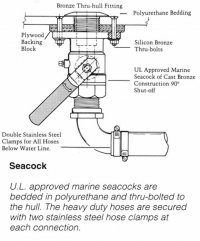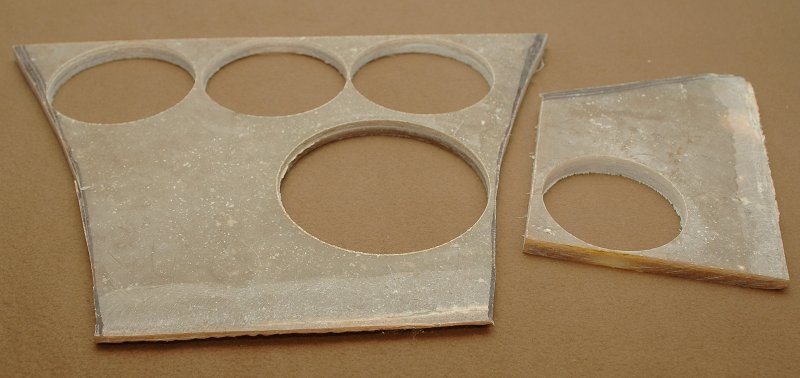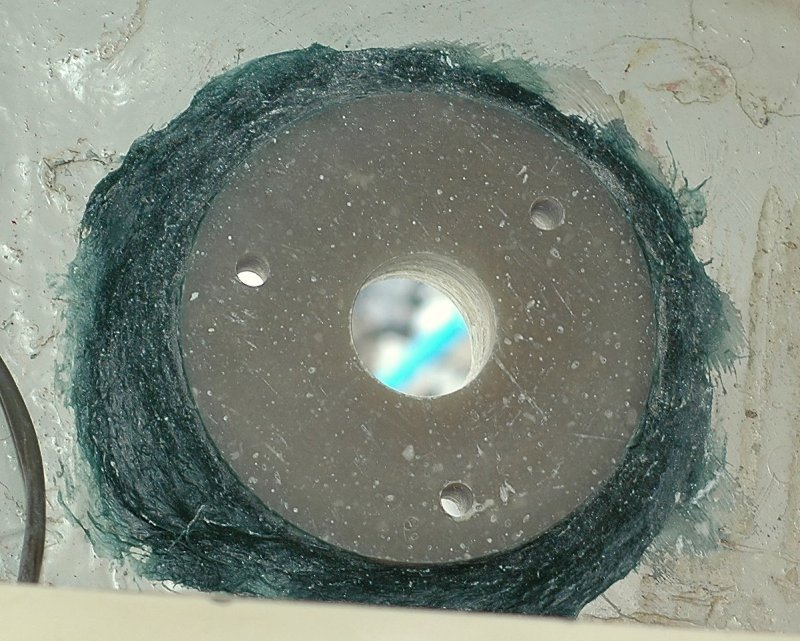After all the discussion here on seacocks, materials, backing plates, etc, and etc.
First, note that this IS a real "seacock," and not a valve screwed onto a threaded thruhull pipe.
So, while browsing the still-up PSC web site I found this diagram in the sample docs for the PSC Crealock 37. As regular readers know, this would not be my personal first choice, but since the diagram is clear and well labeled, it seems fair to make it available here. And, make no mistake, this is representative of what many experts recommend.
Note that the diagram would be more logical (IMHO) if inverted 180 degrees... but then the printing would be hard to read...

Loren
First, note that this IS a real "seacock," and not a valve screwed onto a threaded thruhull pipe.
So, while browsing the still-up PSC web site I found this diagram in the sample docs for the PSC Crealock 37. As regular readers know, this would not be my personal first choice, but since the diagram is clear and well labeled, it seems fair to make it available here. And, make no mistake, this is representative of what many experts recommend.
Note that the diagram would be more logical (IMHO) if inverted 180 degrees... but then the printing would be hard to read...
Loren




 ) so you have drilled holes through the hull to install bolts to secure the seacocks? Is that safe? Why would that be recommended? I recently replaced all of my seacocks, but they are only secured by the threads of the thru hill fittings... I want the best installation possible. But I dont want unneccessary expanses. (I know...its a boat)
) so you have drilled holes through the hull to install bolts to secure the seacocks? Is that safe? Why would that be recommended? I recently replaced all of my seacocks, but they are only secured by the threads of the thru hill fittings... I want the best installation possible. But I dont want unneccessary expanses. (I know...its a boat)

